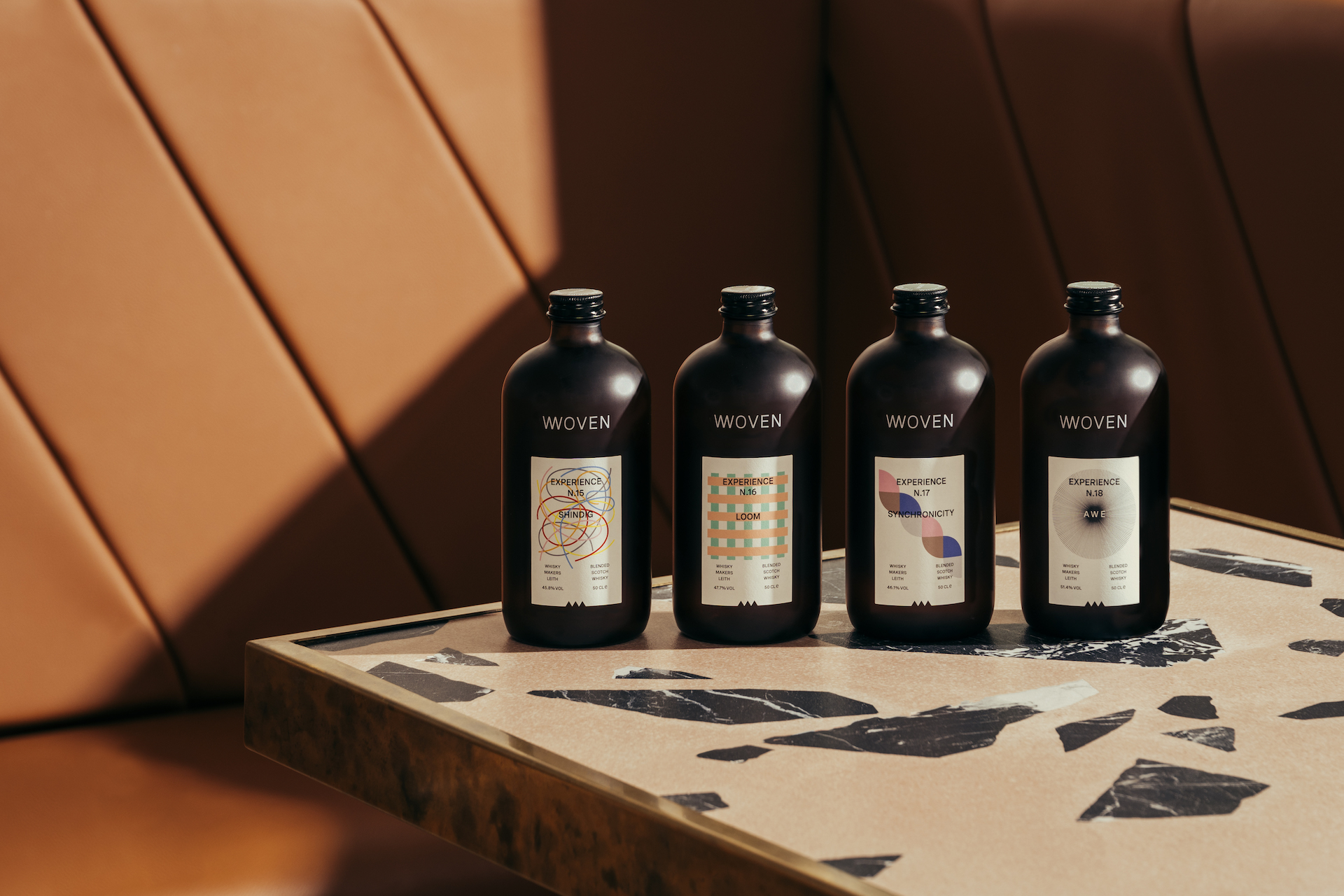
If you’re not moving forward in business, you’re falling behind. This truth hits hard for brands.
It’s essential to stay fresh and relevant.
That’s where the choice between a brand refresh and a complete rebrand comes in. It’s a big decision that can redefine your business’s future.
What is a brand refresh?
A brand refresh is a set of small but strategic changes to your brand’s look and style to keep pace with current trends. This can include updating your logo, tweaking your color scheme, or revamping your marketing materials. It’s about staying fresh and relevant without changing your brand’s core identity.

Take Apple in the 90s: struggling in the tech race, they made a bold move. They ditched their old-school rainbow logo for something sleek and modern. This wasn’t just a new look; it was a statement – Apple was here to play a different game. And it worked. Now, they’re a tech giant known worldwide.
But it’s not just tech giants who’ve mastered this art. Look at Old Spice. Once seen as your granddad’s aftershave, they revamped their image with edgy marketing and fresh scents, targeting a younger, hipper audience. The result? A dramatic turnaround in perception and sales.
So, what’s the best route for your brand? This guide will help you decide between a refresh and a rebrand. We’ll use real stories, like Apple and Old Spice, and clear, no-nonsense advice to help you decide. Whether you’re a startup or an established business, understanding how to evolve your brand skillfully is key to staying ahead.
Let’s get started.
Brand Refresh: The Ultimate Guide

Brand refresh vs. rebrand
A brand refresh is about subtle updates to your brand’s look and feel to stay in tune with current trends and customer preferences. It’s like updating your wardrobe with a few contemporary pieces while keeping your signature style. Your brand’s core identity remains unchanged; it just gets a more modern presentation.
For example, over the years, Coca-Cola has tweaked its logo and packaging to stay modern and appealing. Yet, the fundamental design and brand identity have remained consistent, preserving its iconic status.
Starbucks updated its logo by removing the brand name and focusing on the siren image, making it more minimalist and adaptable for digital use while maintaining its recognizable identity.
McDonald’s refreshed its store interiors with a more contemporary and comfortable design. This change updated the customer experience while maintaining their core branding elements, like the Golden Arches.
Crowdspring refreshed its logo five years ago with a more contemporary and unique design. We also updated some of our brand colors.
A rebrand is a comprehensive transformation of your brand. It involves changing major elements of your brand identity, such as your company name, logo, messaging, and possibly your business values and target audience. This is usually done in response to significant shifts in the market, company mergers, or to shed a negative image.
For example, once known as a brand for older men, Old Spice rebranded with new scents, a new marketing campaign targeting younger consumers, and a completely revamped brand image.
Burberry rebranded to shed its old image associated with gang culture in the UK. They updated their product lines, marketing strategies, and brand messaging, successfully transforming into a high-fashion label.
Airbnb rebranded with a new logo focusing on belonging and unique experiences. This shift was visual and targeted a new positioning in the market.
What’s your brand’s true essence?

Discover your brand’s unique character in just 3 minutes & unveil 15 key insights to make your brand stronger.
Start the free quiz now!
Ten key reasons for a brand refresh
The ability to adapt and stay relevant is key to business success. A brand refresh, distinct from a complete rebrand, offers a powerful strategy to revitalize your business’s image, align with current trends, and resonate more deeply with your audience. Here are ten key reasons why a well-executed brand refresh can invigorate your business and help you compete better:
- Staying relevant to market trends. Keeping up with evolving market trends ensures that the brand remains appealing and contemporary. A clothing brand can update its visual identity to echo current fashion trends, attracting trend-conscious shoppers. An online gadget retailer can revamp its website with the latest UX trends, improving navigation and customer satisfaction.
- Attracting a new customer base. Refreshing a brand can help attract new demographics or market segments. A traditional bookstore can introduce a modernized logo and host community events, appealing to a younger audience. A gaming website can be redesigned with a cleaner, more sophisticated look to attract older, more affluent gamers.
- Differentiating from competitors. A brand refresh can help a business stand out in a crowded market. A local cafe can adopt a unique artisanal theme in its branding, distinguishing itself from chain coffee shops. An e-commerce fashion store can revamp its branding to focus on sustainable fashion, setting it apart from fast-fashion websites.
- Aligning with evolving business goals. As business objectives evolve, a brand refresh can realign the brand’s image with these new goals. A family-run restaurant can refresh its brand to emphasize its new organic menu. An online investment platform can update its branding to reflect its shift towards ethical investing.
- Boosting brand perception and value. A refreshed brand can enhance perceived value and prestige. A local electronics retailer can update its brand to a more premium look, attracting high-end customers. An online course provider can revamp its branding to emphasize elite, expert-led courses, enhancing perceived value.
- Rejuvenating company culture. A brand refresh can reflect and reinforce changes in company culture. An office supplies company can update its branding to mirror its new focus on eco-friendly products. A remote team collaboration tool can revamp its brand to reflect a more dynamic, innovative approach to teamwork.
- Improving customer loyalty and retention. Refreshing a brand can renew customer interest and loyalty. A local grocery chain can revamp its brand with a focus on local community engagement, deepening local customer loyalty. A subscription-based music streaming service can introduce a more user-centric brand image, enhancing user retention.
- Enhancing marketing and advertising efficiency. A modernized brand can make marketing efforts more impactful. A boutique hotel can update its branding with a more visually appealing logo and themes, improving its advertising appeal. An online pet supplies store can revamp its branding with vibrant, eye-catching colors, increasing ad click-through rates.
- Expanding to new markets or regions. A brand refresh can facilitate expansion into new geographic or demographic markets. A regional health food store chain can refresh its brand to appeal to a national audience. A language learning app can update its branding to be more culturally inclusive, aiding its international expansion.
- Modernizing the brand for digital compatibility. Ensuring the brand is suited for today’s digital landscape is crucial. A traditional watchmaker can introduce a digital-friendly brand identity to boost its online presence. An online news portal can revamp its branding for better readability and engagement on mobile devices.
Brand refresh strategy
Here’s how to approach a brand refresh:
1. Assess the need for a brand refresh
Before jumping into a rebrand, determine if a refresh is more suitable. Consider:
- Is the brand’s image slightly outdated but still recognizable?
- Are there minor misalignments with the market trends or audience expectations?
- Is the company undergoing small-scale changes in product lines or services?
A local cafe might refresh its image with a new interior design and updated packaging to appeal to a younger crowd without altering its well-loved brand identity.
2. Brainstorm
A successful brand refresh is a collaborative effort involving the whole team to infuse new life into your brand’s future. Here are ten key elements to consider:
- Logo. Modernize your logo to make it unique and memorable. A logo that stands out can set the tone for your brand identity.
- Font. Choose a font that is professional and aligns with your brand’s personality. An accessible and distinct font can significantly enhance brand recognition.
- Color palette. Use color theory to pick a palette that reflects your brand’s values and appeals to your target audience. Colors can evoke emotions and associations that resonate with customers.
- Brand slogan. Craft a slogan that speaks directly to your audience’s needs and aspirations. A well-thought-out slogan can encapsulate your brand’s essence and mission.
- Writing style. Develop a consistent writing style across all your communications. This style should align with your brand personality and speak directly to your target customers.
- Website design. Update your website to be visually appealing, user-friendly, and reflect your updated brand image. Your website is often the first point of contact with customers, so it should make a strong impression.
- Social media presence. Ensure your social media profiles are consistent with your refreshed brand. This includes visual elements and the tone and type of content you post.
- Marketing materials. Revise all marketing materials – brochures, business cards, email templates – to align with the new brand look and message. Consistency across all materials reinforces your refreshed brand.
- Product packaging. If applicable, redesign your product packaging to reflect the new brand identity. Packaging is a tangible aspect of your brand that customers interact with directly.
- Customer experience. Consider how the refresh can be extended to the overall customer experience. This might include changes in customer service approach, store layout, or user experience for online platforms.
A retail clothing brand could modernize its website for a better user experience while maintaining its classic style in merchandise.
3. Leverage social media for engagement
Use social media for a soft launch of your refresh. Engage in social listening and consider audience feedback. Use platforms like Instagram and Pinterest for more visual engagement.
A beauty brand could tease new packaging designs on Instagram, encouraging follower feedback to gauge reception.
4. Address the audience’s emotions and desires
Connect with your audience to understand their emotional connection to your brand. Consider:
- Hosting focus groups or customer interviews.
- Conducting surveys to gather detailed feedback.
A tech company could host a customer feedback session to understand how users feel about their product interface, guiding updates in design.
5. Implement changes gradually
Start with minor changes and monitor feedback. For instance, introduce new product packaging before overhauling the entire product line. An office supply company could start by updating the design of its most popular product before revamping the entire range.
6. Monitor and measure impact
After implementation, closely monitor the impact on sales, customer feedback, and brand perception. Use tools like Google Analytics and social media insights for data-driven insights.
A bookstore could track changes in foot traffic and online engagement after refreshing its store layout and online presence.
7. Ensure team alignment
Ensure that your team understands and embraces the refreshed brand. Internal workshops or meetings can help align everyone with the new brand direction.
A consulting firm might conduct internal workshops to familiarize its staff with the updated brand messaging and visual identity.
Brand refresh checklist
Embarking on a brand refresh is an exciting but intricate process. To navigate a brand refresh successfully, you’ll need a good checklist covering everything from market research to the final rollout. Whether you’re refreshing an online platform or an offline business, these key steps will help ensure a smooth transition and a vibrant, updated brand presence.
Conduct market research and competitive analysis
You must understand market shifts and customer needs and analyze competitors.
A local bookstore can survey to understand changing reading preferences and analyze nearby bookstores to identify gaps in offerings. An e-commerce fashion retailer can use data analytics to track emerging fashion trends and study competitors’ strategies for engaging younger audiences.
Refine your visual identity
Update your logo, color palette, and other visual elements to be more contemporary while maintaining brand recognition.
A coffee shop can update its logo to a more minimalist design, keeping its iconic symbol but making it sleeker. An online learning platform can introduce brighter colors and a more dynamic logo to appear more engaging and accessible.
Revitalize brand messaging with emotional appeal
Craft messaging that resonates emotionally with your target audience, reflecting your brand’s values and ethos.
A fitness center can rework its messaging to emphasize community and personal well-being, not just physical fitness. A mental health app can update its messaging to focus on empowerment and resilience, connecting more deeply with users.
Audit and update content and brand collateral
Review and update existing content and marketing materials to align with your refreshed brand.
A boutique can update its in-store signage and brochures to reflect its new eco-friendly focus. An online gadget store can overhaul its product descriptions and blog posts to align with a more tech-savvy, modern tone.
Develop and execute an implementation plan
Plan the rollout of your brand refresh, ensuring internal and external communication is clear and consistent.
A restaurant can plan a phased introduction of its new menu and interior design and staff training to communicate the changes to customers. An online service provider can schedule updates to its website, social media, and email campaigns to introduce the new branding in a coordinated manner.
You should also consider the following ten additional elements (not all may be relevant to your business):
- Employee engagement and training. Ensure that your team understands the new brand elements and how to communicate them effectively. This is crucial for maintaining consistency and reinforcing the refreshed brand internally and externally.
- Customer feedback mechanisms. Set up channels to gather customer feedback throughout the refresh process. This can help fine-tune the changes and ensure they resonate well with your target audience.
- Digital asset management. Update all digital assets, including social media profiles, email signatures, and online advertisements, to reflect the new brand identity.
- Legal considerations. If your refresh includes significant changes to logos or slogans, ensure these are legally available and protected.
- Crisis management planning. Prepare for potential challenges or negative feedback that might arise during the refresh process and have a plan to address these effectively.
- Sustainability considerations. Consider how your brand refresh can incorporate sustainable practices or highlight your commitment to environmental responsibility if applicable.
- Community engagement and CSR. Align any community engagement or corporate social responsibility initiatives with your refreshed brand values and messaging.
- Monitoring and analytics. Set up tools and processes to monitor how the brand refresh is being received and measure its impact on key performance indicators.
- Ongoing review and adaptation. Plan for regular reviews of the refreshed brand to ensure it continues to align with your business goals and market dynamics.
- Post-launch marketing campaign. Develop a marketing campaign to promote your refreshed brand and communicate the changes to your audience.
Brand refresh case study: Gucci
Gucci’s brand refresh and revitalization is a prime example of how a well-executed brand refresh can reinvigorate a classic brand and make it relevant for a new era.
Before its revitalization, Gucci, while recognized as a luxury brand, had begun to lose its allure among younger consumers. The brand was perceived as stagnant and not in tune with the evolving fashion landscape.
Gucci adopted the following strategy for a brand refresh:
- New creative direction. Gucci appointed Alessandro Michele as the new creative director in 2015. Michele brought a new aesthetic to Gucci’s collections, infusing them with eclectic, bohemian, and gender-fluid styles. This shift was a radical departure from Gucci’s previous image but resonated strongly with younger demographics.
- Digital engagement. Gucci bolstered its digital presence, embracing social media and digital marketing. They engaged with younger audiences through platforms like Instagram and TikTok, showcasing their revamped designs and new brand personality.
- Inclusive marketing. Under Michele, Gucci’s marketing campaigns became more inclusive, featuring diverse models and breaking away from traditional luxury marketing norms. This inclusivity helped Gucci to appear more accessible and relevant to a broader audience.
- Collaborations and pop culture. Gucci embarked on high-profile collaborations with celebrities, artists, and designers, further embedding the brand in contemporary culture. Collaborations with stars like Harry Styles, who resonates with a younger audience, helped reposition the brand.
- Sustainability initiatives. Gucci is also committed to sustainability, an important value for the newer generation of consumers. This commitment was evident in their materials, production processes, and corporate social responsibility initiatives.
The brand refresh was a resounding success. Gucci experienced a significant surge in sales, especially among millennials and Gen Z consumers. The brand retained its luxury status while becoming more relevant, edgy, and inclusive. Gucci’s revitalization is now studied as a textbook example of how a heritage brand can reinvent itself for the modern market.
Brand refresh case study: BloomTech
Startups and small businesses can benefit from a brand refresh too. Most startups refresh their brand every 3 to 5 years. Let’s look at a fictional example. BloomTech, a startup specializing in smart gardening technology, initially positioned itself as a high-tech solution for experienced gardeners. However, they struggled with broad market appeal and needed to refresh their brand to connect with a wider audience.
They could adopt the following strategy for a brand refresh:
- Revise brand messaging. BloomTech can shift its messaging from being heavily tech-focused to emphasizing ease of use and accessibility for all gardening enthusiasts, including beginners. This approach can make the brand more inviting to a non-technical audience.
- Visual identity update. The startup can update its logo and color palette to reflect a more eco-friendly and approachable vibe. The new design uses earthy tones and a simpler logo, aligning with their mission of making gardening accessible and enjoyable.
- Enhanced digital experience. BloomTech can redesign its website for a better user experience by recognizing the importance of online engagement. They can include interactive features like a virtual garden planner and a blog with gardening tips, appealing to diverse users.
- Community building and engagement. BloomTech can initiate community gardening projects and workshops, fostering a sense of community. They can use social media platforms to share stories from these events, effectively using content marketing to build brand awareness.
- Customer feedback integration. BloomTech can continuously improve its products and services by regularly soliciting and incorporating customer feedback. This customer-centric approach can help refine their offerings and build a loyal customer base.
- Partnerships with eco-organizations. To strengthen its eco-friendly brand image, BloomTech can partner with environmental organizations and participate in green initiatives. This can reinforce their commitment to sustainability and increase their visibility among like-minded consumers.
BloomTech’s brand refresh can be instrumental in redefining its market position. They can attract a wider customer base by broadening their appeal and focusing on community and sustainability. The brand can successfully transition from a niche tech product to a beloved tool for gardeners of all levels, showcasing the power of effective branding for startups.
In a world of constant change, a strategic brand refresh is vital in securing your brand’s future. It’s about more than keeping up; it’s about leading the way and showing your audience that you’re evolving. This journey may take time, but the payoff in relevance, customer engagement, and market presence is substantial. Embrace this change, and let your brand’s adaptability become its most enduring strength.




